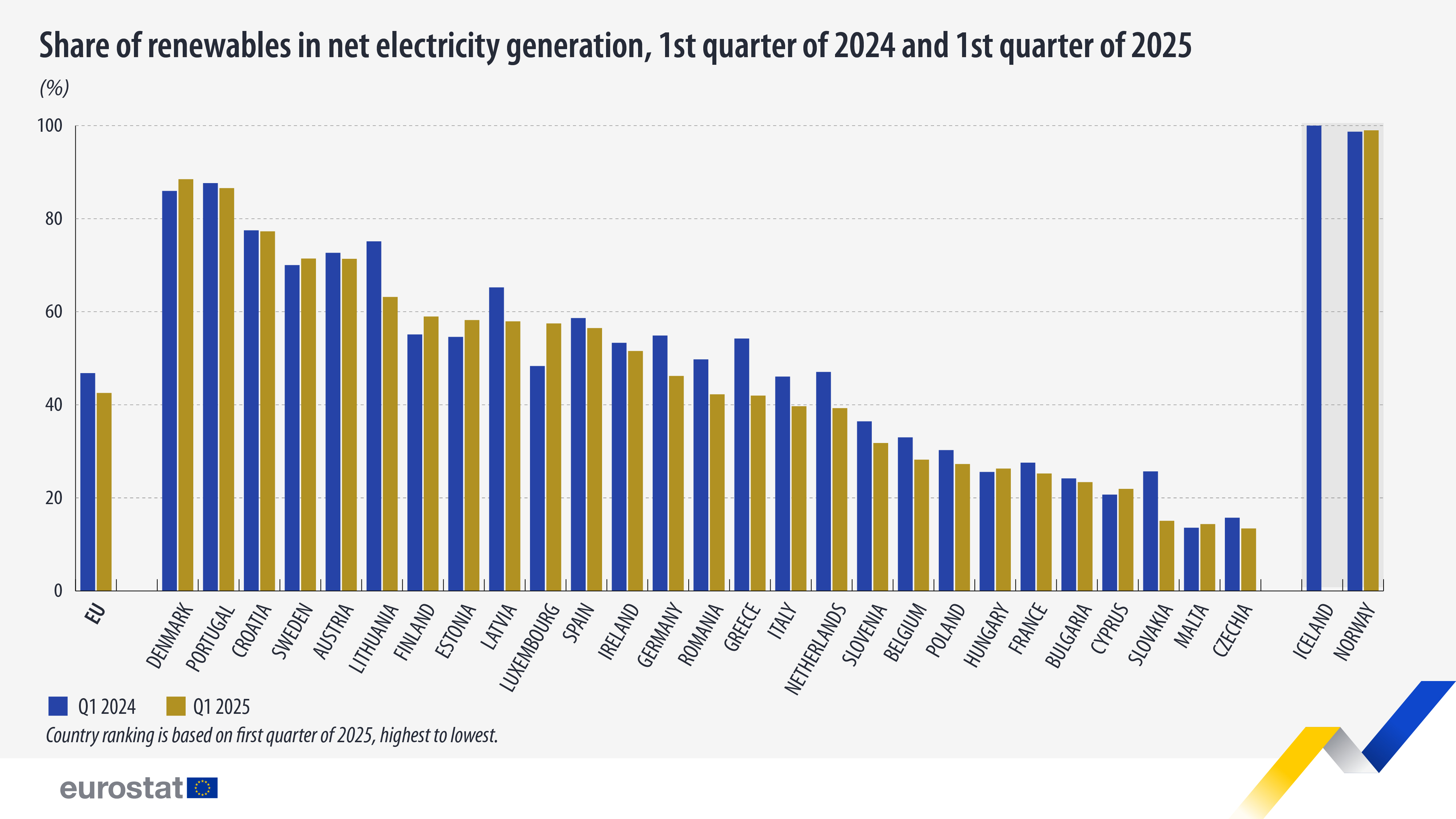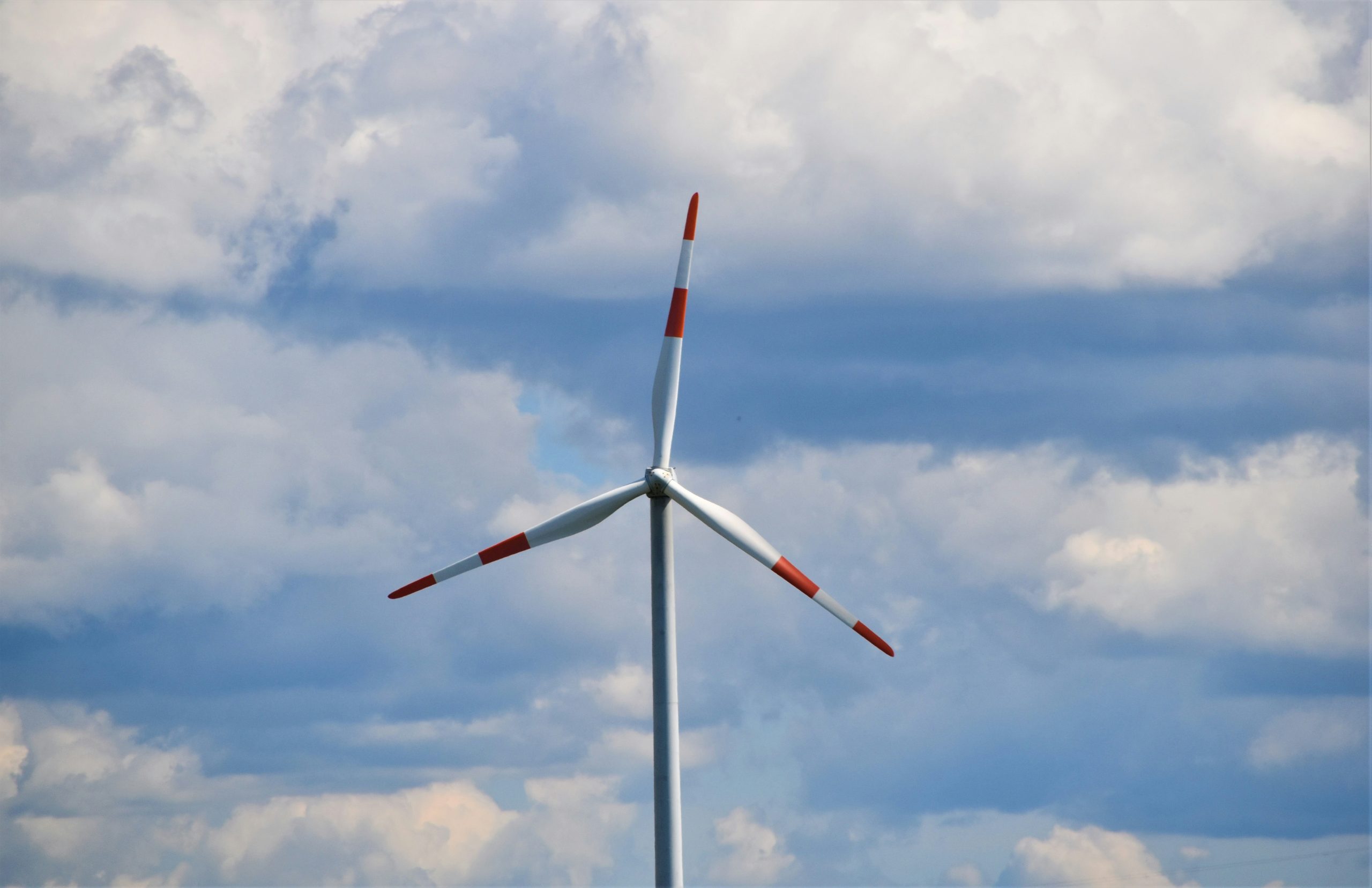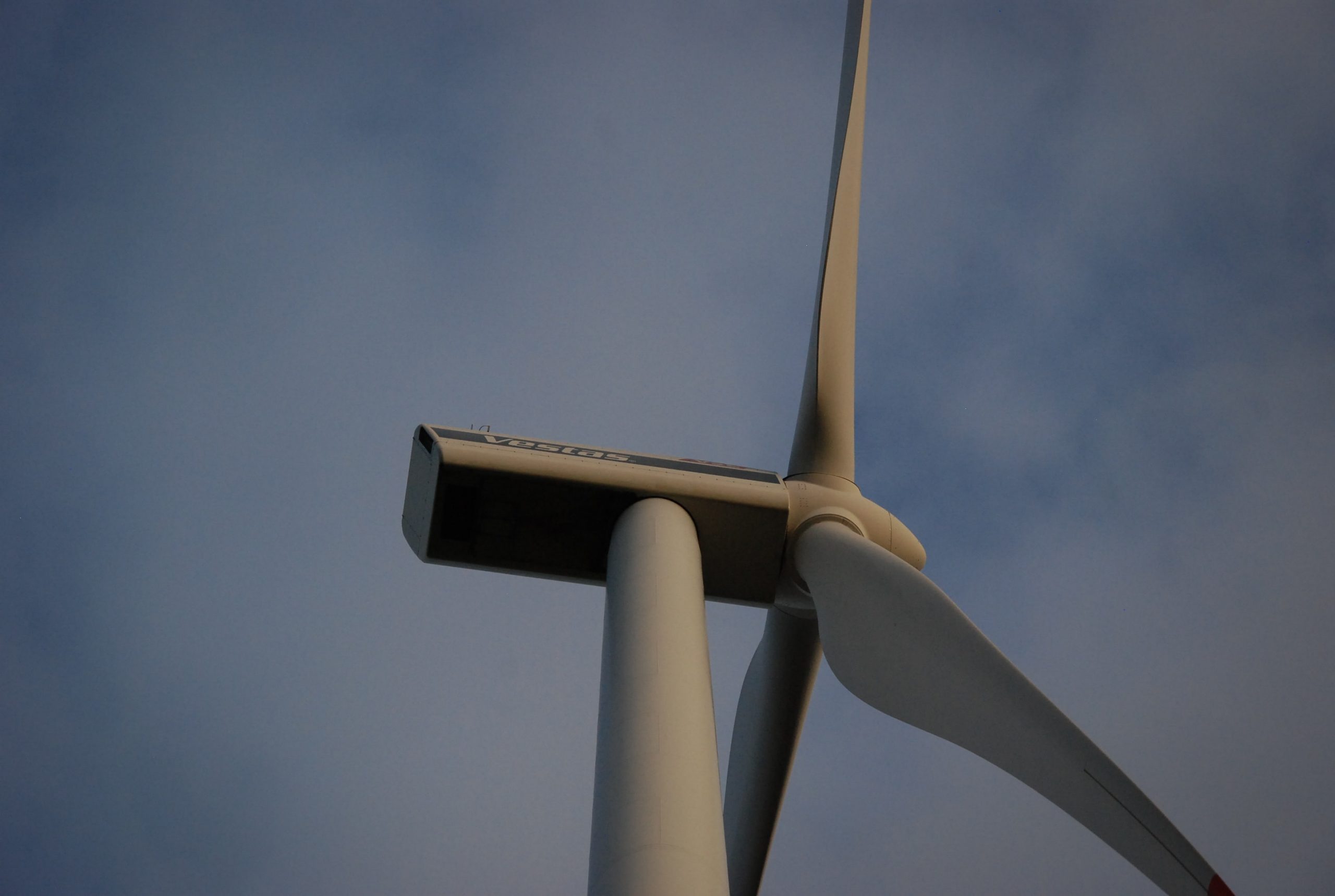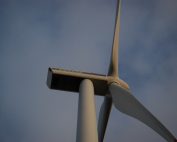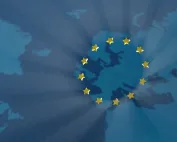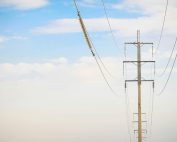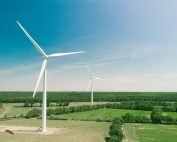In the first quarter of 2025, 42.5% of net electricity generated in the EU came from renewable energy sources. Compared with the first quarter of 2024, this represents a 4.3 percentage points (pp) decrease (from 46.8%). The significant increase in electricity generation from solar (from 40.9 TWh in the first quarter 2024 to 55 TWh in the first quarter 2025) was not sufficient to compensate for the decrease in hydro and wind production (from 260.5 to 218.5 TWh over the same period).
Among EU countries, in the first quarter of 2025 Denmark had the highest share of renewables in net electricity generated with 88.5%, followed by Portugal (86.6%) and Croatia (77.3%). The lowest shares of renewables were recorded in Czechia (13.4%), Malta (14.4%) and Slovakia (15.1%).
In 19 EU countries, the share of renewable energy sources in net electricity generation decreased in the first quarter of 2025 compared with the first quarter of 2024, leading to significant changes in the ranking. This was related to the decrease in hydro and wind production. The largest drops were recorded in Greece (-12.4 pp), Lithuania (-12.0 pp) and Slovakia (-10.6 pp).
Most of the electricity generated from renewable sources in the first quarter of 2025 came from wind (42.5%), hydro (29.2%) and solar (18.1%), followed by combustible renewable fuels (9.8%) and geothermal energy (0.5%).
For more information
- Statistics Explained article on renewable energy
- Shedding light on energy in Europe – 2025 edition
- Thematic section on energy
- Database on energy
- Energy visualisation portal
- Statistics for the European Green Deal
Methodological notes
- The share of renewables in net electricity production should not be mistaken for the share of renewables in gross electricity consumption, which is the main indicator used to monitor the Renewable Energy Directive (RED). The methodologies used to calculate each of them differ. The former (used in this article) is only based on electricity generation, while the latter follows the methodology of the RED and divides electricity generation by electricity consumption, which can lead to shares higher than 100%. In addition, the share according to the RED requires that hydro and wind power are averaged over several years to smooth out the effects of meteorological variation (‘normalised’), and considers electricity from renewable combustible fuels (solid, liquid and gaseous biofuels) as renewable only when these biofuels comply with the sustainability criteria. More details on these differences can be found in the Energy balance guide and the SHARES Manual.
- Hydro power excludes pure pumping in the numerator and the denominator, which is a methodological change compared to the previous news item on this topic published on 19 March 2025.
- Solar includes solar photovoltaics and solar thermal electricity generation.
Source: ec.europa.eu

